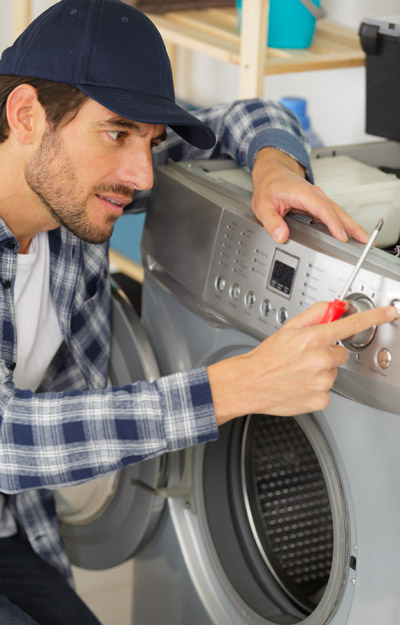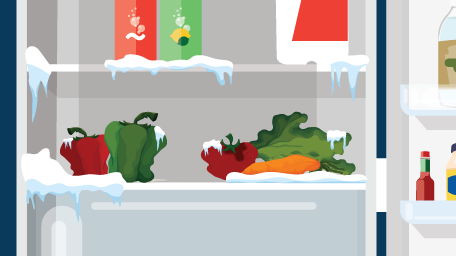Make sure you haven't got the discount earlier.

Why Isn't My Refrigerator Icemaker Working?
There are a variety of reasons a refrigerator icemaker may not be working as it should. As we aim to answer the most common symptom questions and solutions, we will also cover how the icemaker works and the main components to be aware of as you try and troubleshoot your own appliance.

Regardless of the style of refrigerator you have, whether it be French door style, bottom mount, side-by-side, top-mount, if it is a heat release icemaker, it probably resembles one of three units (seen in the image below). All three units will have similar components of an icemaker, which we will explain as we go through each symptom.

Components of an Icemaker:
- The mold (where the ice cubes form)
- Heater (embedded in the mold)
- Eject arm
- Bail/shut-off arm
- Control (located on the front)
- Harness connector (these can come in different styles)
- Shut-off lever (can vary depending on the brand)
How Does a Heat Release Icemaker Work?
The heat-release icemaker works by partially filling with water, and as the icemaker is sitting in the freezer, eventually that water will freeze and turn to ice. When that happens, a thermostat that is located on the front end of that mold will detect the temperature. Once it detects a certain temperature, it will close the circuit. In the control section, this turns on a motor, and this will rotate the ejector arm, which will rotate down on top of the ice cubes. The ejector arm will then just sit there and put pressure on the ice cubes. At the same time the motor is operating, on the bottom side of the icemaker, embedded into the mold itself, is an electric heater. The heater is turned on at the same time and will slowly warm up that mold. Once it reaches a certain temperature, this breaks the bond between the ice cube and the interior surface of the mold. When that happens, the ejector arm can now push those ice cubes, rotate them back up the opposite side, lift out, slide over the edge, and drop them down into the ice container. At the same time that this is happening, as the ice cubes are fully ejected, the water valve that is located at the back of the refrigerator (single or two coil, or in the case of some models that use dispensers and filters, they may have as many as 3-4 solenoid coils), will turn on the coil that affects the icemaker, water will enter the cup at the rear of the ice maker or through the back , and it will run for a specific amount of time until it fills that mold to the proper level. The mold will sit there and wait for the process to start all over again.
Why Isn’t my Icemaker Working?
Now that you have a basic idea of how an icemaker works, lets dive into some of the symptoms that may occur and troubleshoot what could go wrong with your icemaker.
Symptom 1: No Ice Cubes are Being Produced
Bail arm
Make sure the bail arm is not locked in the off position (this applies to a drop-down bail type or a slide-open type shut off lever). It should be in the down position, which will turn on the icemaker control, allowing it to harvest ice cubes as they become frozen.

Icemaker control
If the bail arm is working properly, the problem may be with the internal switch located on the control arm. It is operated by the bail arm, which fits into a slotted opening on the control, and this controls the set of contacts located underneath. When the bail arm is in the "on" position, one set of contacts is closed, and when it is in the off position, a separate set of contacts are closed. If the contacts fail to make it into the "on" position, the icemaker will not harvest any cubes. The components of the control are not serviceable, so if the issue is here, the entire control will need to be replaced.

Symptom 2: Ice Cubes are too Small
Water line restriction
If the ice cubes are too small that would be an indication that not enough water is getting into the mold. There is no float that governs the level of water in that mold, it is completely controlled by the amount of time that the water valve is turned on, which is controlled by the icemaker control at the front. It is adjustable to a certain extent and typically somewhere between seven to ten seconds of fill time through the water valve, will give an adequate amount of time to fill the mold. Before making any adjustments, if it has been working fine all along, chances are it is not the control that is giving you the problem, it is likely a restriction in the water line going to the icemaker.

Symptom 3: Ice Cubes are too Large
Fill valve
The most common reason for ice cubes being too large is the fill valve is staying on longer than power is being applied to it. This is a mechanical problem with the fill valve, making it so it does not shut off right away, allowing too much water in. This is usually caused by dirt getting inside of the valve, and the only way to correct this, is to replace it.

Symptom 4: Ice Bin Overflows
Bail Arm
The bail arm may be the incorrect one for your model. If you have recently replaced the bail arm, and are having this issue, double check that you have the correct part for your specific model. The function of the bail arm, is that it should lift up during the ejection of the cubes and as it drops back down, if its not able to go all the way, or if it sits on top of the bin, this should shut the icemaker off without being in the locked position. If this does not happen because the bail arm is not the correct one, and doesn’t drop down far enough, you will get a bin that fills up with too much ice.
Icemaker Head
If there is a defect with the icemaker head, it will make it so the icemaker does not shut off.

Symptom 5: No Cubes in the Mold
This symptom might also cause water to splash over the actual ice bin and freeze the cubes together.
Fill Tube/Fill Valve
The fill tube brings water into the fill cup and if this freezes up, water will splash everywhere, and none will get down into the mold itself. This is usually caused by the fill valve.
We hope that after reviewing our common symptoms and solutions you have been able to troubleshoot your own icemaker and have narrowed down the parts you will need for your repair. If you have determined you need to replace one of the parts above, you can use your model number to search PartSelect.com for the OEM replacement part needed to get your icemaker back up and running again. Good luck with your repair, and checkout our YouTube channel for more helpful videos.





























